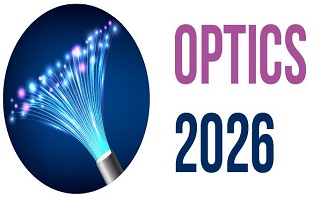3rd International Conference on
Optics and Laser Technology
October 29-30, 2026 | Berlin, Germany

Optics 2026

Duzce University, Turkey
Abstract:
The
presence of pectoral muscle regions in certain breast images can lead to
inaccurate results when artificial intelligence (AI) models are used for tasks
such as cancerous mass detection and breast density classification. The aim of
this study is to develop an AI application that can automatically clean
pectoral muscle regions in mammography images. We proposed using a machine
learning approach to train an AI model to accurately segment the pectoral
muscle regions in mammography images. We utilized a dataset of 400 mediolateral
oblique (MLO) images from the CBIS-DDSM dataset, which were manually segmented
and labeled using segmentation software. These images were used for training a
U-Net network, a popular architecture for image segmentation, using Python. The
trained AI model was then applied to
1000 MLO images and the predicted pectoral muscle regions were removed. Manual
checks and corrections were performed on these images to obtain a large
training dataset for further training. With the augmented training dataset, the
final AI model was trained using the U-Net network. Evaluation using the
intersection over union (IoU) ratio showed over 80% overlap between predicted
and manually segmented regions, indicating successful pectoral muscle removal.
The model's performance suggested its potential for automatic pectoral muscle
eliminate in breast imaging. In conclusion, our study demonstrated that it is
possible to effectively eliminate unwanted pectoral muscle regions in
mammography images using the developed AI model based on the U-Net network.
Biography:
Yakup Arslan is a
researcher in the Department of Physics at Duzce University, Türkiye. His
research areas include the characterization of living tissues, monitoring
changes in various biological tissues and designing autonomous systems in these
areas by using Electrical Impedance Spectroscopy, Fourier Transform Infrared
Spectroscopy and artificial intelligence (AI) techniques. Recently, he has
focused on artificial intelligence applications in health. In this context, he
is studying to develop an AI model for the purpose of mass and calcification
detection and mass classification in mammography images obtained from the
Turkish population.
